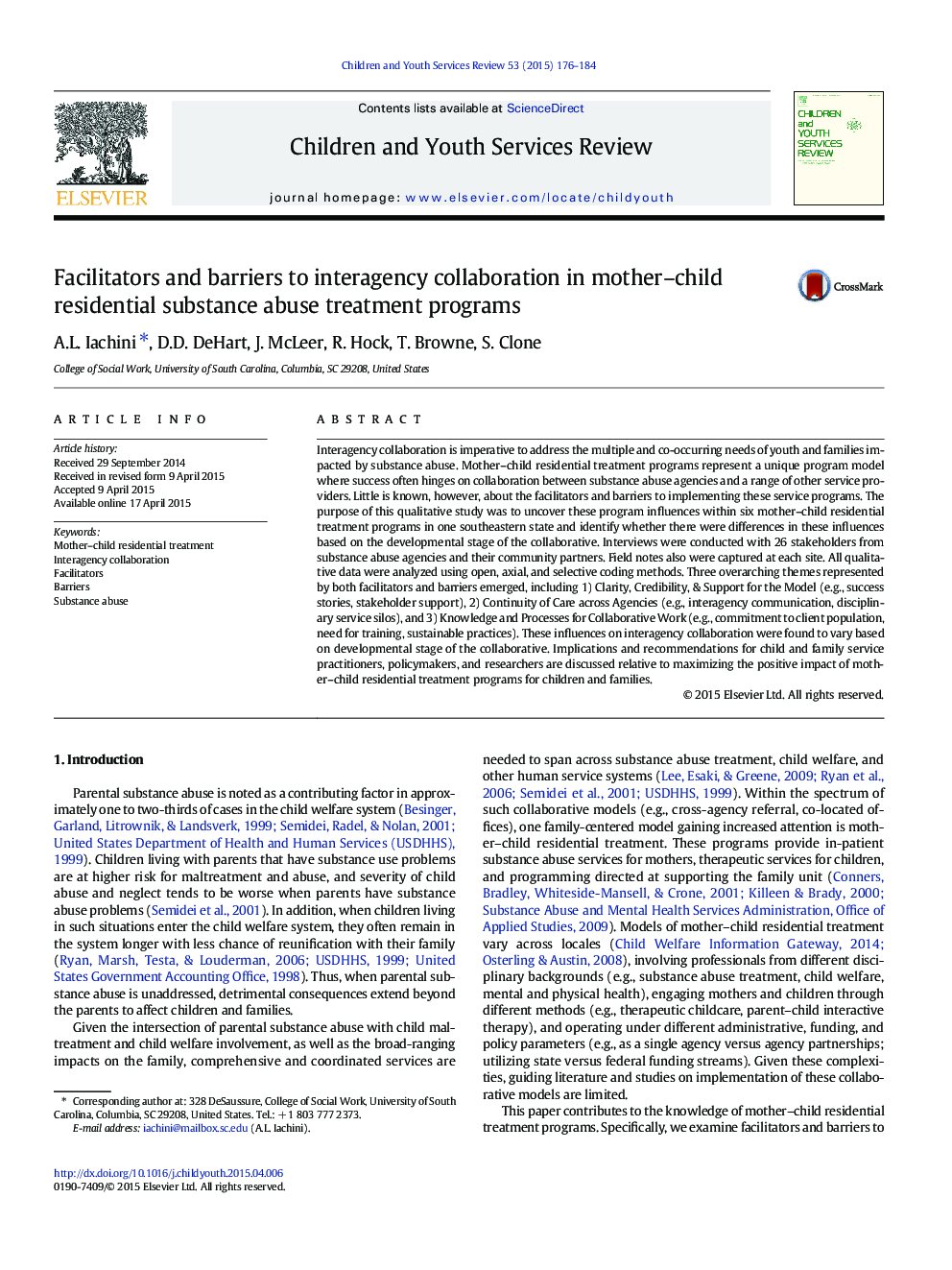| Article ID | Journal | Published Year | Pages | File Type |
|---|---|---|---|---|
| 6834056 | Children and Youth Services Review | 2015 | 9 Pages |
Abstract
Interagency collaboration is imperative to address the multiple and co-occurring needs of youth and families impacted by substance abuse. Mother-child residential treatment programs represent a unique program model where success often hinges on collaboration between substance abuse agencies and a range of other service providers. Little is known, however, about the facilitators and barriers to implementing these service programs. The purpose of this qualitative study was to uncover these program influences within six mother-child residential treatment programs in one southeastern state and identify whether there were differences in these influences based on the developmental stage of the collaborative. Interviews were conducted with 26 stakeholders from substance abuse agencies and their community partners. Field notes also were captured at each site. All qualitative data were analyzed using open, axial, and selective coding methods. Three overarching themes represented by both facilitators and barriers emerged, including 1) Clarity, Credibility, & Support for the Model (e.g., success stories, stakeholder support), 2) Continuity of Care across Agencies (e.g., interagency communication, disciplinary service silos), and 3) Knowledge and Processes for Collaborative Work (e.g., commitment to client population, need for training, sustainable practices). These influences on interagency collaboration were found to vary based on developmental stage of the collaborative. Implications and recommendations for child and family service practitioners, policymakers, and researchers are discussed relative to maximizing the positive impact of mother-child residential treatment programs for children and families.
Related Topics
Health Sciences
Medicine and Dentistry
Perinatology, Pediatrics and Child Health
Authors
A.L. Iachini, D.D. DeHart, J. McLeer, R. Hock, T. Browne, S. Clone,
